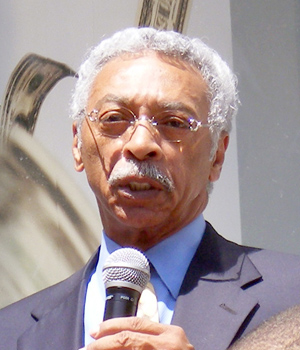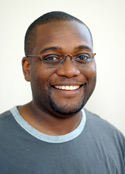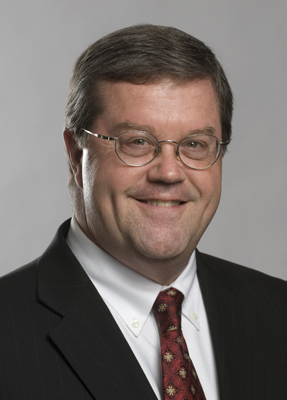Much has been said about Birmingham’s ample green space. And it is ample – more than, in fact. To put it simply, we love parks. Parks are a big deal here, and likely to get bigger when we start connecting them all, one to another. But that’s jumping ahead.
Birmingham is a very green city and region – literally. We are doing better these days in the environmental sense of the word also, but for just pure color, green is it in Birmingham. You couldn’t count the shades of green I can see out of my living room or office window. We are blessed with green trees (many of them pines), green shrubery, green-coated mountains and valleys, the underbrush is green (especially in the kudzu growing season), we’re blessed with acres and acres of green grass, green foliage. We even adore fried “green” tomatoes. Face it – we’re green!
Our tradition of dedicating parks to preserve all that green space dates back to the 1920s to the city’s decision to create a Birmingham Park and Recreation Board and to hire the noted Olmstead landscaping firm to create a plan for preserving and enhancing our many parks and open spaces. The firm had a notable track record even then, having developed plans for park space in cities such as Boston and Baltimore. Their recommendation was comprehensive and highly detailed, and you may read about the vision set forth in the Olmstead report in “The Olmstead Vision: Parks for Birmingham,” published by the Birmingham Historical Society in 2006.
At the core of the Olmstead vision was the idea of preserving green space along the streams that flowed through our valleys. In fact, the ridge and valley topography of the Birmingham region lent itself to this concept and is today why there is at least some park space preserved along the Shades Creek Greenway adjacent to Lakeshore Drive in Homewood. Similar plans are in place for greenways along Village Creek and Valley Creek and the preservation of land in the Turkey Creek watershed is continuing. The Olmstead report envisioned the set-aside of land around the creeks and the preservation of that land (and, thus, the preservation of the quality of the water as well).
The creation of some entirely new parks also has gained the public’s attention in recent years, stepped up dramatically in 2006 when United States Steel announced its largest corporate philanthropic gift ever. The steel company agreed to sell more than 2,000 acres of wooded land along the ridge of Red Mountain to a non-profit trust – and offered it at roughly a 50% discount to the appraised value of the land. In addition, U. S. Steel stroked a check in the amount of $1 million to help the park planners get started with their operations. Imagine park space larger than New York City’s Central Park connecting Birmingham to Bessemer along the ridge of Red Mountain where iron ore mines once fed the mills of Jones Valley.
In the city center, just south of the Morris Avenue railroad tracks, a smaller but equally strategic space has been dedicated as a park and preparation for construction is under way there. The Railroad Reservation Park will extend along the south side of the tracks at Morris Avenue two blocks to 2nd Avenue South and east-west between 18th and 14th streets. This park will feature grassy areas, a lake with paddle boats, walking paths and a pedestrian overpass from the park to the soon-to-be-built intermodal transit center on Morris Avenue.
In East Birmingham, the Ruffner Mountain Nature Preserve sits astride Ruffner Mountain – 1,100 acress of woodlands and trails criss-crossing the ridge of the mountain and connecting old mining sites. A new nature center is being constructed with federal funds and park supporters are raising additional funds to add a new 500-acre tract to the park’s holdings.
South of Birmingham is the large Oak Mountain State park, and to our West is Tannehill State Park. Dotted across our landscape are literally hundreds of smaller municipal and “pocket” parks.
In Pittsburgh a couple of years ago, some of us had an opportunity to learn about that city’s parks program and the “string of pearls” concept – an idea that’s also being implemented here. The idea is that parks exist to be enjoyed, and that perhaps linking the park or green spaces can amplify that enjoyment. Thus, a series of walking, hiking, biking trails has been developed (a la the Shades Creek Greenway) to connect the parks – as a string is used to connect pearls. A day can easily be envisioned when one could (if one wished) walk, run or hike from Tannehill State Park on the Tuscaloosa County line through the Red Mountain Park, along greenways to the Railroad Reservation Park, continuing on rail rights-of-way to Ruffner Mountain and, ultimately, on to Cheaha Mountain and the Appalachian Trail.
And why, exactly, is this important? Aside from the enjoyment a park offers, the enhancement of quality of life, the preservation of land and water quality and the general benefits to our health and well-being, setting aside parks and green spaces say something to us about the future. Taking these actions in the 1920s was a way for our forefathers to ensure the sustainability of the city and region while staking a claim to the economic growth that followed. Want a better economy? Build a park and improve people’s lives. Seems to me that the same equation works today, and as we preserve and enjoy the new spaces, we’re making a positive statement about the future we all hope to share in this really green place.
Barry Copeland is executive vice president of the Birmingham Regional Chamber of Commerce. Check out his blog over at Positively 20th Street, where this entry was originally posted on April 21.
 Could you imagine the conversations that would result from Birmingham’s mayor, Larry Langford, taking his ideas directly to the blogosphere? We had definitely thought of it and all of the possibilities – that’s why we offered him a chance to write a weekly column here on my Birmingham during the early days of his administration. We also tried to include him in the interviews that we conducted as part of our election coverage. We never received an official response from him on either of those invitations.
Could you imagine the conversations that would result from Birmingham’s mayor, Larry Langford, taking his ideas directly to the blogosphere? We had definitely thought of it and all of the possibilities – that’s why we offered him a chance to write a weekly column here on my Birmingham during the early days of his administration. We also tried to include him in the interviews that we conducted as part of our election coverage. We never received an official response from him on either of those invitations.




 The inboxes at The Terminal received several emails late yesterday afternoon, a couple of them including the responses received by two citizens after they sent in their concerns to Mayor Langford’s office about
The inboxes at The Terminal received several emails late yesterday afternoon, a couple of them including the responses received by two citizens after they sent in their concerns to Mayor Langford’s office about  When Bob Dylan’s famous lament on the nature of hypocrisy first made the charts, those of us who are now called Baby Boomers memorized all the words. Positively 4th Street pretty much laid it all bare and Dylan’s words seemed to capture what we in the 60s thought typified the hypocracy we saw all around us – in the media, in the government, in any institution with authority. What could sum up the youthful, disillusioned attitude of those watershed years better than, “You’ve got a lot of nerve to say you are my friend. When I was down, you just stood there grinning!”
When Bob Dylan’s famous lament on the nature of hypocrisy first made the charts, those of us who are now called Baby Boomers memorized all the words. Positively 4th Street pretty much laid it all bare and Dylan’s words seemed to capture what we in the 60s thought typified the hypocracy we saw all around us – in the media, in the government, in any institution with authority. What could sum up the youthful, disillusioned attitude of those watershed years better than, “You’ve got a lot of nerve to say you are my friend. When I was down, you just stood there grinning!”

Sweat that corner on the grand stage
I was on my way to a meeting late last week, walking westbound along 1st Avenue North when I got to 22nd. I suddenly wished I’d had my camera with me because of the tableaux vivant before me – one that would definitely tell a story to Birmingham area residents. It would have been one that no doubt confused them and enraged them at the same time.
The easternmost lane of traffic was blocked off as city crews worked to restripe 22nd Street. The westernmost lane was occupied by one of the MAX buses that had been purchased right after I arrived in town four years ago – broken down at a bus stop. The driver was standing at the door to the bus, leaning on it and looking as though it had happened many times before. A passenger looked quite animated as he vented the frustration of all the others at the driver, who appeared as though he cared, but knew that he could do nothing.
In the background because of the angle one could look at The News’ new building and the cranes signaling construction on a much-needed garage addition next to former corporate headquarters soon to become a luxury hotel.
I said the scene would tell a story to Birmingham residents, though some who stumble across this post will no doubt wonder why, since some would argue that this scene takes place in cities across the world every day.
In college one of my architectural history professors introduced me to a phrase I often use to describe urban life:
The city’s a stage.
All of life is a theatre, a play if you will, with some sets more dramatic than others. We’re all actors, whether intentionally or not. The big city is normally viewed as that stage – the place where you pull out all the stops. My favorite story from living on the coast is of Charleston’s mayor, Joe Riley, choosing the gravel for their waterfront park based on the sound it made under his feet. People still revel in his attention to detail as well as the constant examination of whether or not he was doing what was best for the city and its citizens. He has had his critics as well for other reasons but that’s more of a Dre’s Rambings post anyway…
Here in Birmingham there are some projects that will move forward visibly in the near future, among them those first two legs of the Three Parks Initiative, our new downtown hotels and the expansive campus green that now punctuates that you’re on an urban college campus on the city’s Southside. Improving that main stage of downtown is tempting and necessary, though perhaps it is more important to look at the realities of the situation and determine how to help the understudies – the folks that help the theater continue to run from day to day – enjoy their stages as well.
Some of the “realists” out there would say that paving city streets in the midst of an economic crisis doesn’t make sense. It makes perfect common sense however when streets without potholes make it easier for us to get from point A to point B without it tearing up our cars. This way we can earn money to keep a roof over our heads.
What the realists should question is the idea to stripe the same streets that you’re proposing to repave first as part of an ambitious infrastructure improvement campaign. Especially after stating that one of the reasons that you’re undertaking it involves some of the patch work done by work crews when servicing our utilities. Perhaps it will take a while for that project to be awarded (and winter is coming) but maybe folks need to have that explained to them.
We don’t even have to go into the bus situation and why it needs to be addressed.
As breathtaking and as necessary as some of these upgrades to our sets are going to be, we’ve got to pay attention to those “little” details while the big changes occur. While some will not care initially about the public’s opinion on this matter, they will eventually vote – with their wallets first as they continue to lament for the good old days and then in the booth.
André Natta is the managing editor of The Terminal.
Leave a comment
Posted in Commentary
Tagged Alabama, Birmingham, Commentary, opinion, urban